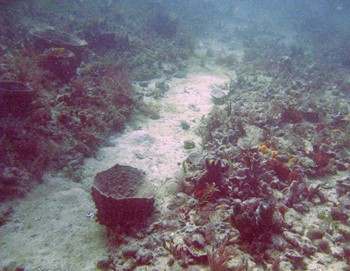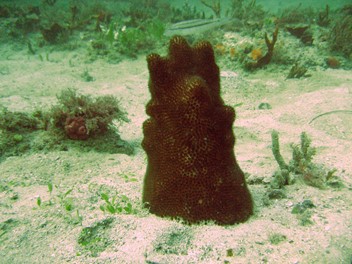Shallow Reefs

The ‘Big Bend’ region of north Florida is often referred to as the ‘forgotten coast’ because it is relatively undeveloped with low human populations, and therefore provides a rare opportunity to study local marine habitats under near-pristine conditions. The Apalachee Bay has extensive hard-grounds that support coral and sponge communities. Some of the species found in the Big Bend region also occur further south in more tropical environments; however, the climate in north Florida is much more variable than the Florida Keys, with water temperatures ranging from 16-32°C.
 The presence of healthy populations of ‘tropical’ coral species living under a wide range of conditions provides an in situ laboratory for study of physiological responses to environmental changes. Despite the ecological value of the coastal coral and sponge reefs, they have not been well-studied. My research focuses on mapping and habitat characterization of a selection of nearshore reefs, describing the communities and linking the types of benthic fauna with different habitat types. In addition to this descriptive research, I am working on the reproductive biology and growth rates of several of the more abundant stony corals and gorgonian octocorals. This kind of baseline data creates a critical reference for future changes and helps us understand how communities may respond to short term (seasonal) and long term (climate) fluctuations.
The presence of healthy populations of ‘tropical’ coral species living under a wide range of conditions provides an in situ laboratory for study of physiological responses to environmental changes. Despite the ecological value of the coastal coral and sponge reefs, they have not been well-studied. My research focuses on mapping and habitat characterization of a selection of nearshore reefs, describing the communities and linking the types of benthic fauna with different habitat types. In addition to this descriptive research, I am working on the reproductive biology and growth rates of several of the more abundant stony corals and gorgonian octocorals. This kind of baseline data creates a critical reference for future changes and helps us understand how communities may respond to short term (seasonal) and long term (climate) fluctuations.

